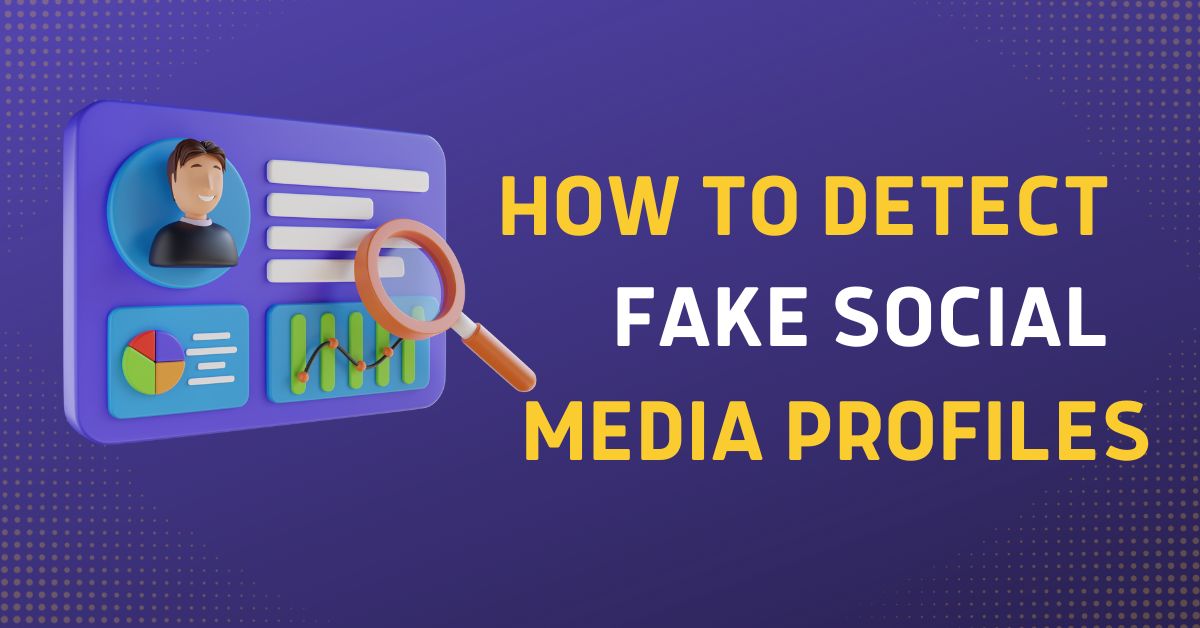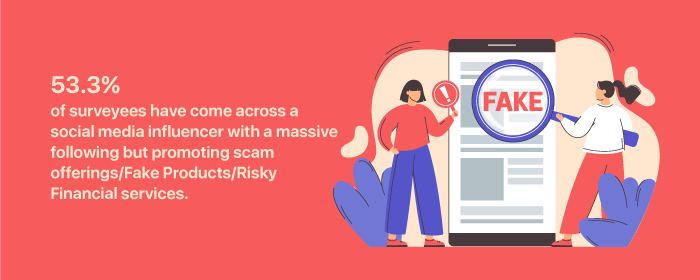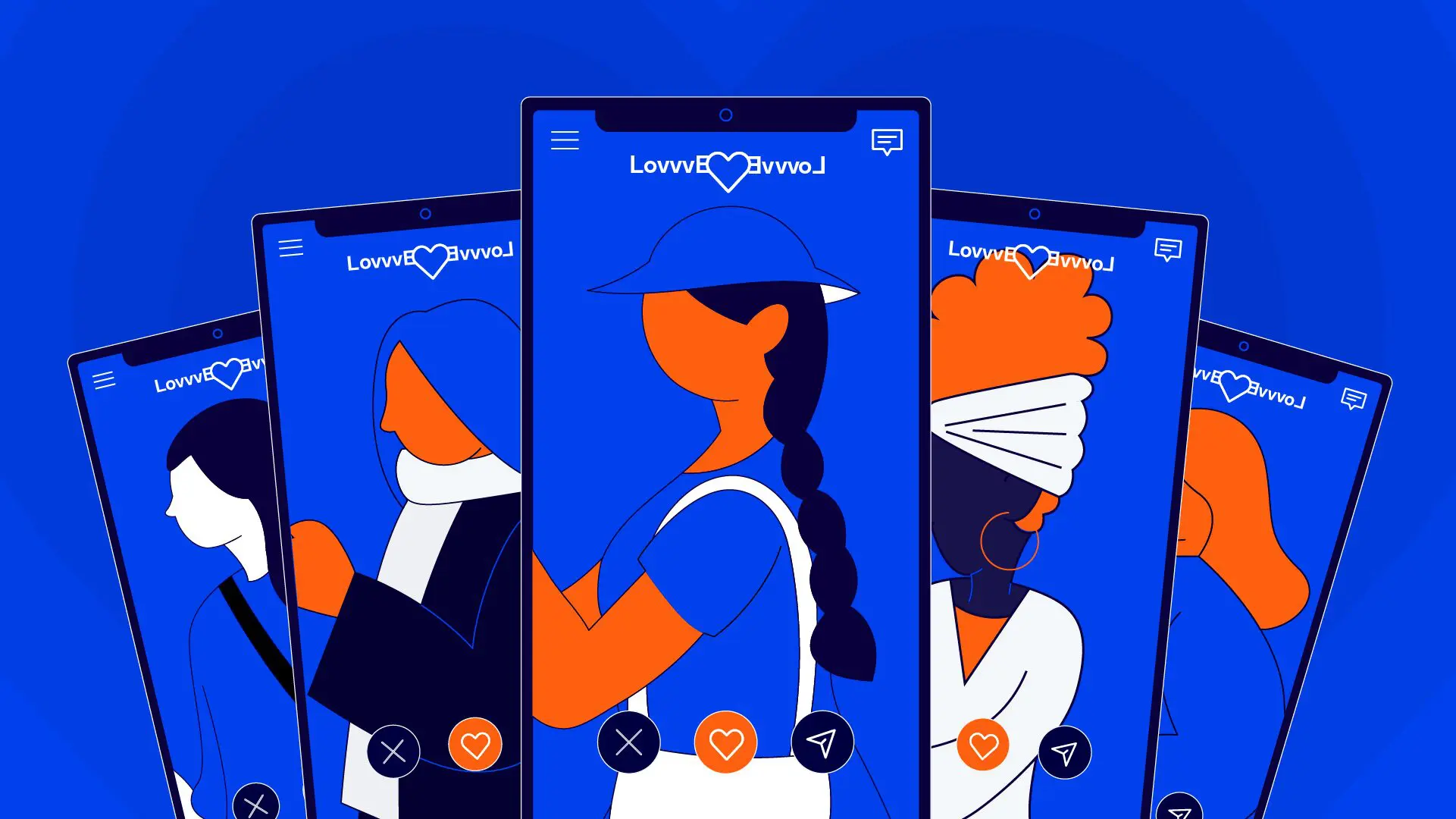
Introduction
Online Dating and Fake Profiles
In today’s digital age, online dating has become a popular avenue for individuals seeking companionship, love, or even casual encounters. While this modern matchmaking method offers convenience and a broader pool of potential partners, it also presents unique challenges. One significant hurdle is the emergence of fake profiles. Many people create these misleading personas for various reasons, from pure amusement to more malicious intents. This leaves genuine users navigating an uncertain landscape, needing to discern between real connections and deceptive façades.
For instance, imagine swiping right on someone who appears charming in their profile picture, only to discover their real-life counterpart differs drastically. This scenario is not uncommon; studies suggest that nearly one-third of profiles on dating sites might be fake or misleading. Such experiences often lead to frustration and distrust, tarnishing the otherwise exciting journey of finding a companion.
Risks Associated with Fake Profiles
Engaging with fake profiles poses several risks that every online dater should be aware of:
- Emotional Manipulation: Fake profiles might engage in emotional scams, preying on those seeking genuine connections. The emotional toll can be significant, leading to heartbreak and disappointment.
- Financial Exploitation: Many scammers create affectionate relationships that, in time, lead to requests for financial support or gifts, draining victims financially.
- Personal Safety Concerns: Interacting with someone who hides their true identity can pose serious safety risks. There have been cases where individuals face real-life threats after arranging meetings with online contacts.
- Wasted Time and Energy: Investing time in a fictitious relationship can consume emotional resources and hinder the quest for authentic connections.
In summary, while online dating platforms can offer exciting opportunities for connection, the presence of fake profiles injects an element of risk that users must navigate with caution. Awareness and education about these potential pitfalls are crucial for maintaining a safe and enjoyable online dating experience.

Identifying Red Flags in Dating Profiles
Inconsistencies in Photos and Information
After some encounters with questionable profiles, it’s vital to become skilled in identifying red flags in online dating. One of the most significant indicators of a fake profile is the inconsistencies you may notice in photos and the information provided. For example, a person might upload several photos that seem impeccably stylish and well-lit while describing themselves as someone who prefers a low-key lifestyle. This kind of contradiction often sends an alert to the discerning eye.
When evaluating profiles, consider checking:
- Photo Dates: If someone posts photos that seem dated or could be from a professional shoot, it’s worth investigating further.
- Age Verification: Ensure the age stated aligns with the appearance in pictures. A significant age discrepancy can be a warning sign.
Ultimately, if a profile seems too perfect or too carefully curated, it may be a façade hiding an ulterior motive.
Suspicious Behavior Patterns
Watch for suspicious behavior patterns that might indicate something amiss. A potential red flag is if someone quickly asks to move the conversation off the dating platform to a private messaging app.
Also, consider the following behaviors:
- Evasive Responses: If questions about their interests or background prompt vague responses or a quick change of topic, this could signal they are hiding something.
- Overly Flattering or Pushy: Excessive compliments or immediate proposals for serious commitment can feel disingenuous and should raise concerns.
In these cases, trust your instincts; if something feels off, it likely is.
Lack of Verifiable Details
Another significant red flag to note is a lack of verifiable details in someone’s profile. Genuine users usually share specific information about their lives, hobbies, or interests that invite further conversation. Watch out for profiles that:
- Avoid Personal Details: If a user declines to share their job, location, or other personal details, it may suggest they are concealing their true identity.
- Generic Interests: Interests listed as ‘traveling’ or ‘movies’ can be too vague, lacking genuine enthusiasm or context.
It’s essential to dig deeper. Profiles that lack depth can often be a thin cover for fake personas, and they can lead to frustration on your quest for a meaningful connection. Identifying these red flags will empower you to make more informed choices in the online dating world.

Utilizing Reverse Image Search Tools
How Reverse Image Search Works
As online daters become more vigilant against fake profiles, utilizing reverse image search tools has emerged as a smart and effective strategy. But how do these tools work? Essentially, a reverse image search takes an image you upload or link and scans the web for other instances of that image or similar visuals. This can help you determine if the person you’re chatting with has used someone else’s photo or is presenting a misleading identity.
Here’s how to use a reverse image search:
- Select the Image: Right-click on the profile photo you find suspicious or download it.
- Upload to a Search Engine: Use platforms like Google Images or TinEye, and upload the image file.
- Analyze Results: Review any matches or similar images that appear. This can highlight whether the same photo appears on other sites, often indicating that the profile could be fake.
This tool not only saves time but also adds a layer of security to your online dating experience.
Platforms for Image Verification
There are several platforms available for image verification that can enhance your online dating safety. Here are a few popular options:
- Google Images: A widely used tool, just upload the image or paste the URL, and within seconds, you’ll see where else the image has appeared on the web.
- TinEye: This is a dedicated reverse image search engine that offers advanced search capabilities, making it easier to find the source of an image.
- Bing Visual Search: Similar to Google, users can upload images and discover related content across the web.
Many people might not realize that simply checking a profile photo can reveal more about a person’s authenticity. For instance, a friend of mine once encountered a charming match online, only to find that the photo had been lifted from a social media profile of a model. By leveraging these tools, she protected herself from potential heartache.
In the end, utilizing reverse image search tools is an intelligent move for anyone navigating the online dating landscape, ensuring you have the upper hand in identifying genuine profiles.

Social Media Cross-Referencing
Importance of Checking Social Media Profiles
After utilizing reverse image search tools, the next logical step in ensuring the authenticity of an online date is social media cross-referencing. In today’s interconnected world, most people maintain a social media presence, and this can serve as a valuable resource when it comes to vetting potential partners. Checking someone’s social media profiles can provide insight into their personality, interests, and overall lifestyle.
Why is this important?
- Authenticity Verification: A genuine individual typically has a consistent online identity across various platforms. By checking their profiles on Instagram, Facebook, or LinkedIn, you can confirm that the person you’ve been chatting with mirrors their dating profile.
- Expanded Understanding: Social media doesn’t just reveal a person’s life; it showcases what they value, their hobbies, and how they interact with others. For instance, if someone claims to be passionate about hiking but has no posts to authenticate that passion, it raises a flag.
Take the case of a friend who met a prospective partner online. After finding their profile on Instagram, she noticed photos that depicted a vastly different lifestyle than what they had described in their chats. This discrepancy not only made her question the credibility of their claims but also ultimately led her to dismiss future conversations.
Spotting Discrepancies in Online Presence
Analyzing social media profiles can reveal discrepancies that indicate potential red flags. Consider the following when cross-referencing:
- Inconsistencies in Information: Examine their dating profile against their social media bio. Does their age, occupation, or interests line up? If someone claims to be an executive yet posts content that contradicts that narrative, it’s worth a deeper dig.
- Interactions with Others: Look at how they engage with friends and family. Genuine profiles often feature interactions that feel real and personal, while fake profiles may lack meaningful connections.
- Frequency of Posts: An absence of recent activity might suggest a scammer who isn’t invested in building a life online. A genuine person typically shares moments and experiences regularly.
Social media cross-referencing not only helps ensure authenticity but also enriches your understanding of an individual as you seek meaningful connections in the digital world. By following these steps, you can navigate online dating with greater confidence and security.

Virtual Video Calls and Verification
Benefits of Video Calls in Dating
As online dating continues to evolve, the integration of virtual video calls has become a game changer for individuals seeking authentic connections. Engaging in video chats can significantly enhance the dating experience by adding a personal touch that text or messages cannot provide. The benefits of video calls in dating are many, and here are a few key advantages:
- Real-Time Interaction: Video calls allow for immediate responses and a natural flow of conversation, helping to establish rapport and build a connection more effectively than traditional messaging.
- Non-Verbal Cues: Through video calls, users can pick up on non-verbal cues such as facial expressions, body language, and eye contact, which play a crucial role in communication. This can help gauge attraction and compatibility.
- Authenticity and Trust: Seeing someone live adds credibility to your interactions. It helps validate that the person you’ve been speaking to is indeed who they claim to be, creating a sense of trust.
For example, a friend of mine was apprehensive about meeting someone she’d been chatting with online. They agreed to a video call, and she was relieved to see that his personality matched the charm he had portrayed in his messages. This step allowed her to move forward comfortably.
Verifying Identity through Video Interaction
Video calls also serve as an excellent tool for verifying someone’s identity before arranging a face-to-face meeting. Here are practical strategies to ensure authenticity during these interactions:
- Direct Questions: Engage the person in questions about their life, hobbies, or experiences that align with their profile. Genuine individuals will be able to provide consistent answers.
- Utilize Features: Encourage the use of fun features like filters or backgrounds – if someone is reluctant or avoids engaging visually, it may point to deeper issues about their authenticity.
- Go Beyond Small Talk: Use this time to discuss personal stories or shared interests. Authentic interaction will usually reveal genuine personality traits that match their online persona.
By incorporating video calls into your online dating journey, you are not only enhancing your connection with others but also taking important steps to protect yourself from deception. It’s a proactive approach that fosters solid relationships built on trust and transparency.
Seeking Recommendations and References
Asking for Referrals from Mutual Connections
In the landscape of online dating, seeking recommendations and references can serve as an invaluable tool in ensuring safety and authenticity. If you find yourself chatting with someone who shares mutual connections, don’t hesitate to reach out to those individuals for insights. This step can provide essential context that a dating profile might not reveal.
Here’s how you can approach this:
- Identify Mutual Connections: Start by scanning through your potential match’s profile for any shared friends or acquaintances. Platforms like Facebook or Instagram often make this easy.
- Reach Out Politely: When contacting a mutual friend, keep your inquiry friendly and straightforward. You might say, “Hey, I noticed you know [Name]. I’ve been chatting with them, and I’d love to hear your thoughts!”
- Be Open and Informative: Share a little about what you’ve learned so far about the person. This can help your mutual friend provide more informed and relevant feedback.
I recall a time when a friend was interested in dating someone from her social circle. She reached out to a mutual friend who offered invaluable insights and even shared past experiences, helping her make an informed decision regarding pursuing the relationship.
Verifying Identity Through Trusted Sources
Aside from asking mutual friends, verifying identity through trusted sources further enhances safety in online dating. Here’s how you can go about it:
- Check Social Networks: In addition to dating platforms, look up their presence on professional social networks like LinkedIn. Cross-reference locations, job titles, and even shared endorsements to validate their professional persona.
- Background Information: If an individual seems particularly intriguing, consider utilizing services that offer background checks, especially if you plan to meet in person. Many reputable services can provide information that can ease any concerns.
- Discuss with Close Friends: Share details about your interaction with close friends. Their perspective can help evaluate whether your match seems genuine or raises any red flags.
By seeking recommendations and verifying identity through reliable sources, you can navigate the dating scene with increased confidence. This proactive approach not only safeguards your emotional well-being but also sets the groundwork for establishing meaningful and trustworthy connections. Building relationships based on authenticity and mutual trust sets the stage for success in online dating.

Reporting and Blocking Fake Profiles
Platforms for Reporting Fake Profiles
Navigating the online dating landscape can sometimes lead to frustrating encounters with fake profiles. Thankfully, most dating platforms have put systems in place to help users report and block these deceptive accounts effectively. Knowing how to leverage these platforms can make your experience safer and more enjoyable.
Here are some popular dating apps and their reporting processes:
- Tinder: Users can easily report profiles by tapping on the profile’s settings icon and selecting “Report.” You’ll be able to provide feedback on what specifically was misleading or inappropriate.
- Bumble: Similar to Tinder, Bumble allows users to report profiles via the chat feature or directly from the profile. After selecting “Report,” users can specify the reason for their concern.
- OkCupid: This platform provides a straightforward process to block and report users. Simply go to their profile, click on the flag icon, and follow the prompts to report.
- Match.com: This service offers the option to report suspicious activity by clicking on “Report a Concern” on the user’s profile. They even have a help section to guide users through the process.
These features not only help remove fraudulent accounts but also contribute to a safer community for everyone.
Steps to Take If You Encounter a Fake Profile
If you stumble upon a fake profile, knowing the steps to address it can empower you:
- Gather Evidence: Before reporting, take screenshots of any suspicious messages or profiles. This documentation will bolster your case when you report the profile.
- Report the Profile: Utilize the reporting feature of the platform. Provide as much detail as possible about why the profile seems fake or fraudulent.
- Block the User: After reporting, consider blocking the individual to prevent further communication. This step will help protect your peace of mind.
- Inform Others: If you have friends who use the same platform, let them know about the fake profile. Awareness can help create a more secure dating environment for everyone.
- Trust Your Gut: If something doesn’t feel right, it’s always better to be safe. Avoid engaging with the user further.
By taking action against fake profiles, you contribute to a safer online dating community. Not only does this promote a more authentic experience for yourself, but it also helps fellow users avoid potential pitfalls. Trusting your instincts and being proactive can lead to more meaningful connections in the ever-evolving world of online dating.
Conclusion
Recap of Strategies
As we’ve navigated through the complexities of online dating, it’s clear that being informed and proactive can greatly enhance your experience while also protecting you from potential pitfalls. Here’s a quick recap of the strategies discussed:
- Identifying Red Flags: Always look for inconsistencies in photos and profiles, suspicious behavior patterns, and a lack of verifiable information. If something feels off, don’t ignore your instincts.
- Utilizing Reverse Image Search Tools: Use platforms like Google Images or TinEye to verify profile photos and ensure authenticity. This simple step can prevent you from falling prey to a misleading persona.
- Social Media Cross-Referencing: Check their social media presence to gather more information about their interests and lifestyle. Look for discrepancies between what’s presented on dating platforms and what appears on social media.
- Engaging in Video Calls: Schedule virtual meetings to assess chemistry and authenticity. This allows you to gauge body language and personality nuances that text-based communication can miss.
- Seeking Recommendations: Don’t hesitate to ask mutual friends for insights about a potential match. Their perspectives can help you feel more secure in your choices.
- Reporting and Blocking: Familiarize yourself with how to report fake profiles on various platforms. Taking steps to block deceptive users helps maintain a safer dating environment for all.
Importance of Vigilance in Online Dating
Ultimately, vigilance is key in the realm of online dating. As appealing as these platforms may be, they can harbor less-than-genuine interactions. By actively applying these strategies, you not only protect yourself but also contribute to the integrity of the dating community.
Remember, your safety and emotional well-being should always come first. Don’t rush into anything; take your time to build connections and verify trustworthiness. Approaching online dating with proactive caution can transform your experience, leading to authentic relationships that are both enriching and enjoyable. Your journey in the digital dating world can be fulfilling if you remain vigilant and informed!
